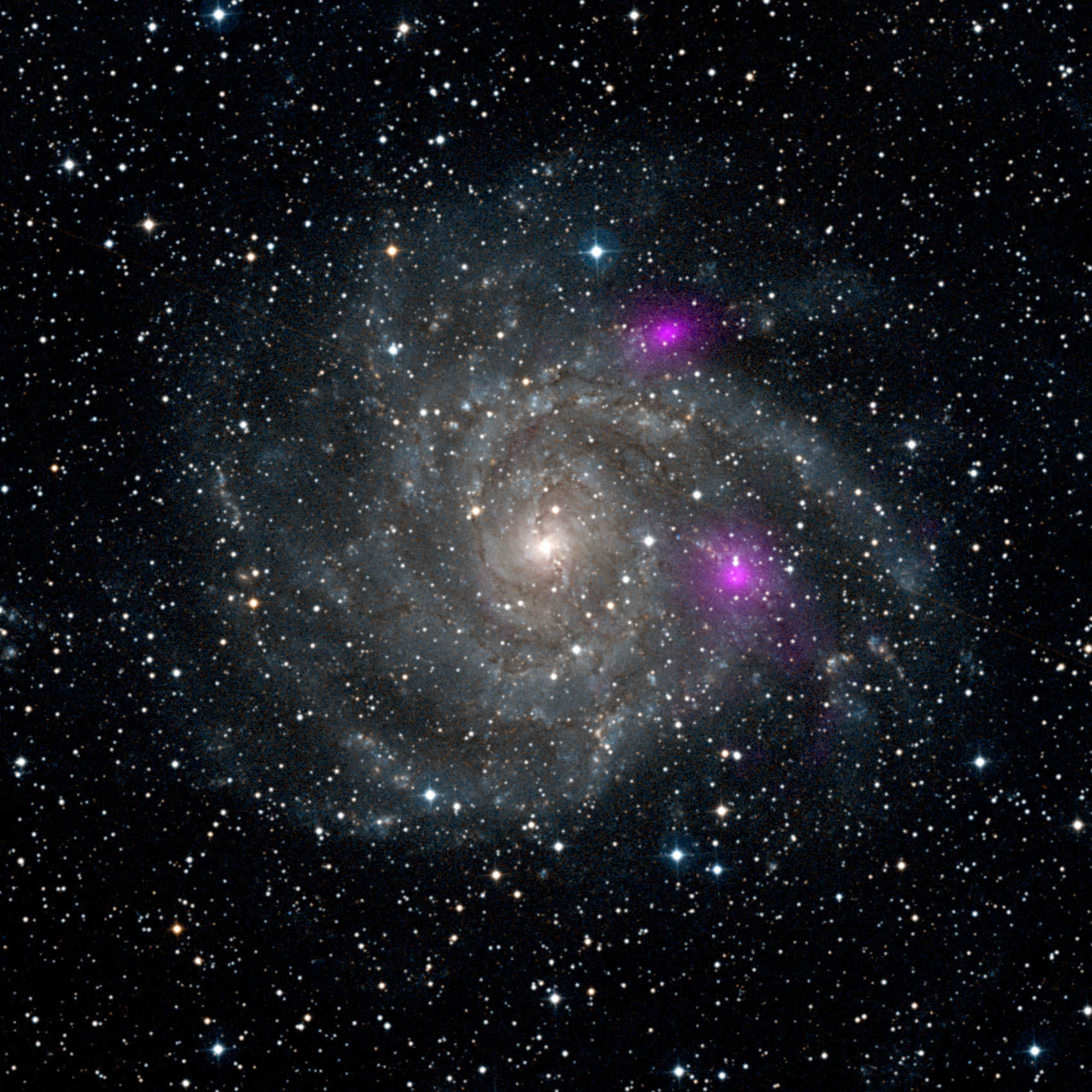Please note: Osher Rainforest will be closed for maintenance Jan. 14–16.
Science News
Old Problems, New Techniques
January 8, 2013

Ryan Wyatt, Director of Morrison Planetarium and Science Visualization, reporting from first day of the American Astronomical Society (AAS) meeting in Long Beach, California…
I’m not going to get into exoplanet announcements such as this one or this one from yesterday morning’s meeting (as one attendee tweeted in summary, “There’s more exoplanets than you can shake an exostick at.”). We have ten press conferences scheduled, and three of them revolve around (pun intended) exoplanet discoveries. So I’ll plan for an exoplanet wrap-up toward the end of the conference.
Instead, I’d like to talk about the work of a few of those spiffy space-based telescopes—yes, the ever-popular Hubble Space Telescope, but also Chandra X-Ray Observatory and a new mission known as NuSTAR.
A grand effort known as the Hubble Ultra Deep Field (HUDF) has imaged the same, small, seemingly-dull part of the sky repeatedly at numerous, finely-tuned wavelengths of light, revealing distant galaxies that reside farther than just about anything we can see. Looking out into space means looking back into time, so the HUDF reveals an important epoch in the history of the Universe.
It turns out the Universe in its youth went through an unusual phase when most of the hydrogen in deep space was in the form of molecules, with no net electrical charge… By the time the Universe reached the age of about 800 million years, however, most of the hydrogen had become ionized, which is to say broken down into electrons and protons (both of which have electrical charge). But it takes energy to ionize hydrogen, so where did that energy come from?
This is the kind of puzzle that keeps astronomers busy (and employed) for decades. Since 2004, astronomers have refined and extended the HUDF observations to eke out more information about this epoch, and the most recent observations have allowed scientists to reach some well-founded, long-sought conclusions.
We know that young galaxies would emit radiation that could ionize the Universe, but can they produce enough radiation to light up the “Cosmic Dawn,” as it’s sometimes called? Astronomers love to come up with more exotic theories, such as the annihilation of dark matter, to explain things like this, but are such puzzling processes required?
Turns out they aren’t. Galaxies can do the job on their own. That’s not the sexiest answer, but it should ultimately feel quite satisfying: the Universe behaves in a way that we understand and can predict. But it took a remarkable amount of sleuthing to come up with this relatively mundane response.
First off, we tally up the galaxies we see, and we estimate how much radiation they would emit. And the first surprise? Small, faint (the researchers like to call ’em “feeble”) galaxies make a significant contribution to the total energy output, and the large, luminous can’t do the job on their own.
Turns out that the currently-observed population of galaxies does not produce enough radiation to ionize all that intergalactic hydrogen. Bummer. But we know that we’re not seeing all the galaxies! We can detect only the brightest ones at these great distances, and the HUDF team’s work suggests that an earlier generation of galaxies existed before the ones we’re seeing. So how can we estimate the energy contribution from what we’re not seeing directly?
The team of astronomers undertook the challenge of tallying the luminous galaxies versus the number of feeble galaxies, and projecting those estimates back in time. Based on HUDF and other observations from, for example, the Wilkinson Microwave Anisotropy Probe (WMAP), we can determine when stars and galaxies started lighting up the Universe, so when the team added up all the light from all the galaxies they estimated to have existed over that time… Bingo! Just enough light energy to ionize the Universe’s hydrogen.
All this work actually pushed Hubble to its limits. And it promises many more discoveries from the James Webb Space Telescope, due to launch in 2018, which will peer back farther in time to see earlier generations of galaxies.
Hubble isn’t alone out there, and x-ray astronomy in particular benefits from having telescopes in space. Stephen S. Murray from Johns Hopkins gave a review of “50 Years of X-Ray Astronomy,” describing remarkable successes in the field. From 1962 to 1999, x-ray astronomy has experienced an increase in sensitivity of 10 billion! (And Murray noted that it took astronomers 400 years to achieve that kind of gain in optical sensitivity…) That kind of revolutionary change has led to spectacular discoveries related to some of the most exotic objects in astronomy—including black holes, pulsars, and supernovae.
An impressive video from Chandra shows a curlicue jet streaming from the pulsar at the center of the Vela Supernova Remnant. This complex structure provides a nifty puzzle for astronomers to describe its origin.
And the recently-launched Nuclear Spectroscopic Telescope Array (NuSTAR), one of the least expensive missions ever launched by NASA, has released its first images. The pair of telescopes spotted two bright, energetic sources of x-rays in the galaxy IC 342—capturing black holes in the process of “feeding” (as NuSTAR team leader Fiona Harrison puts it).
Stay tuned for more spacy stuff the rest of the week…
NuSTAR image courtesy of CalTech